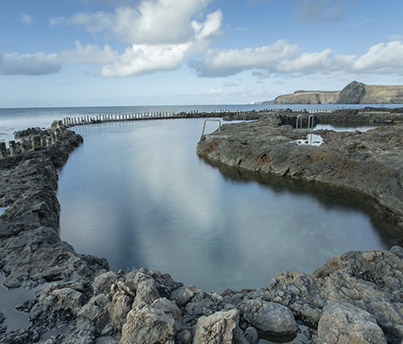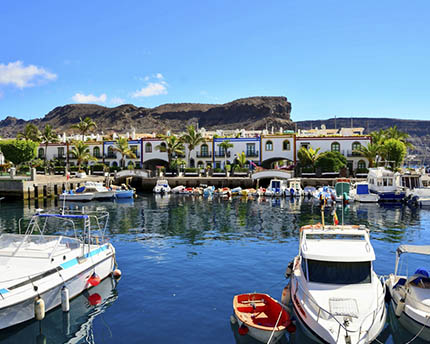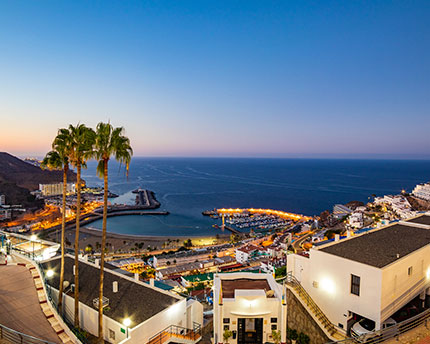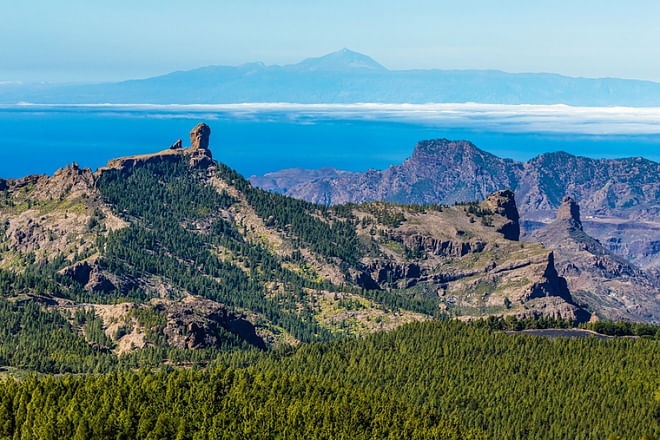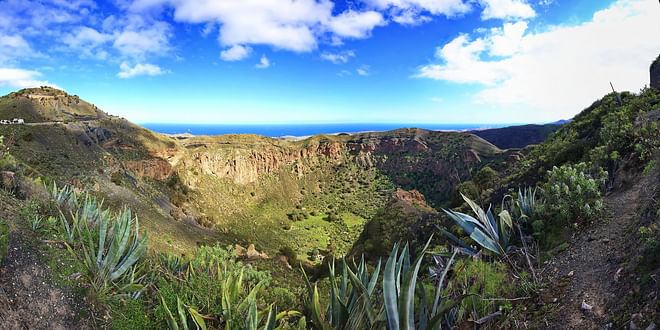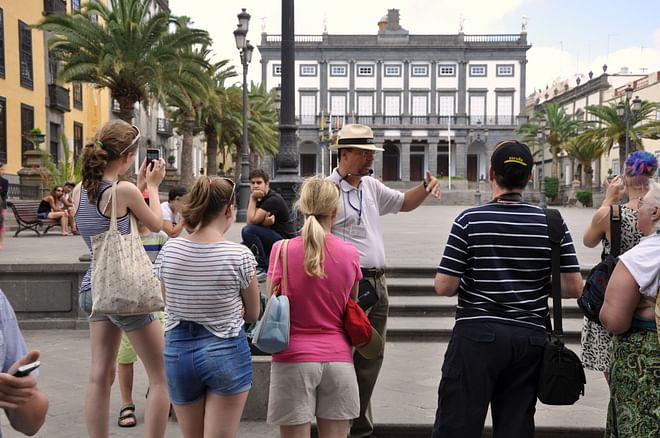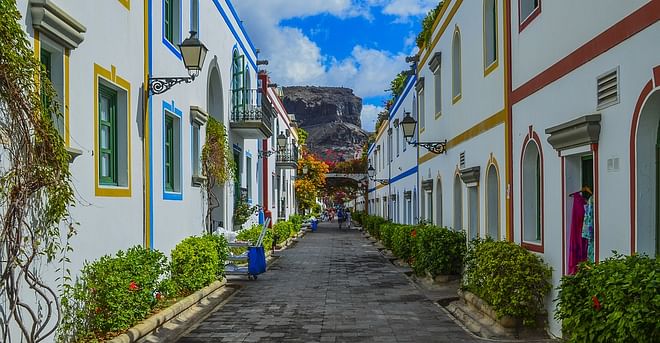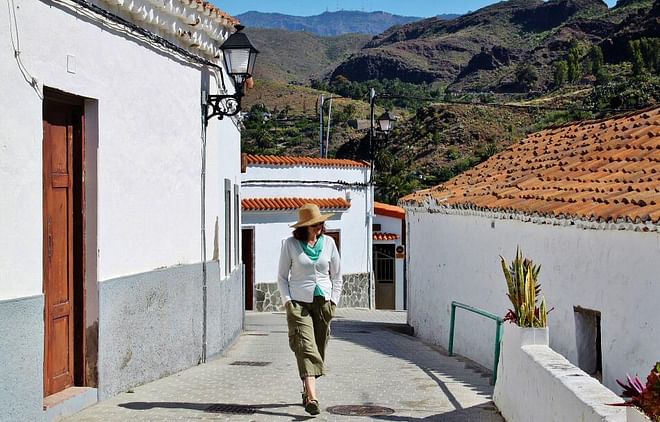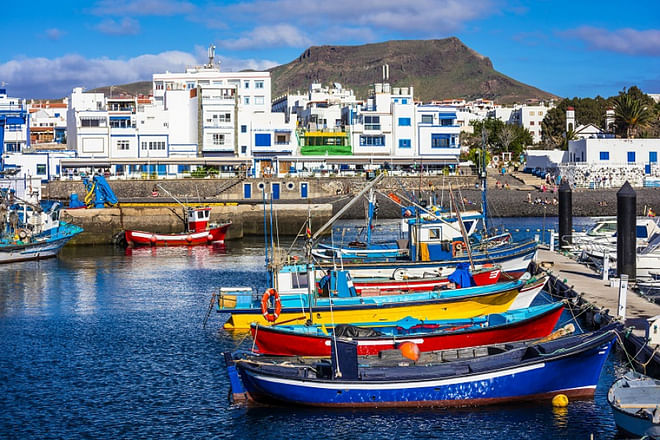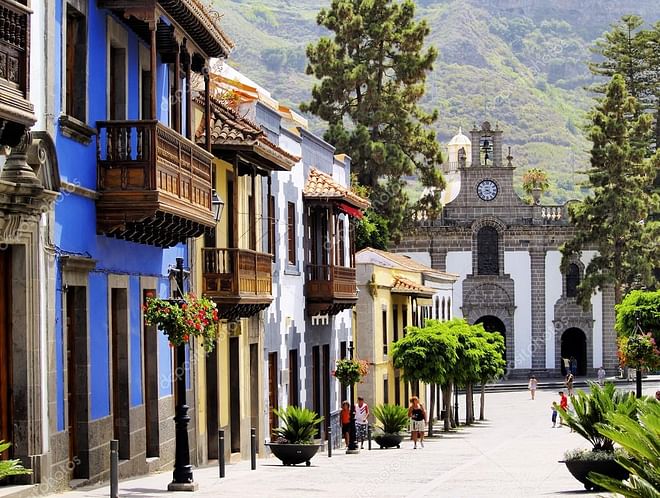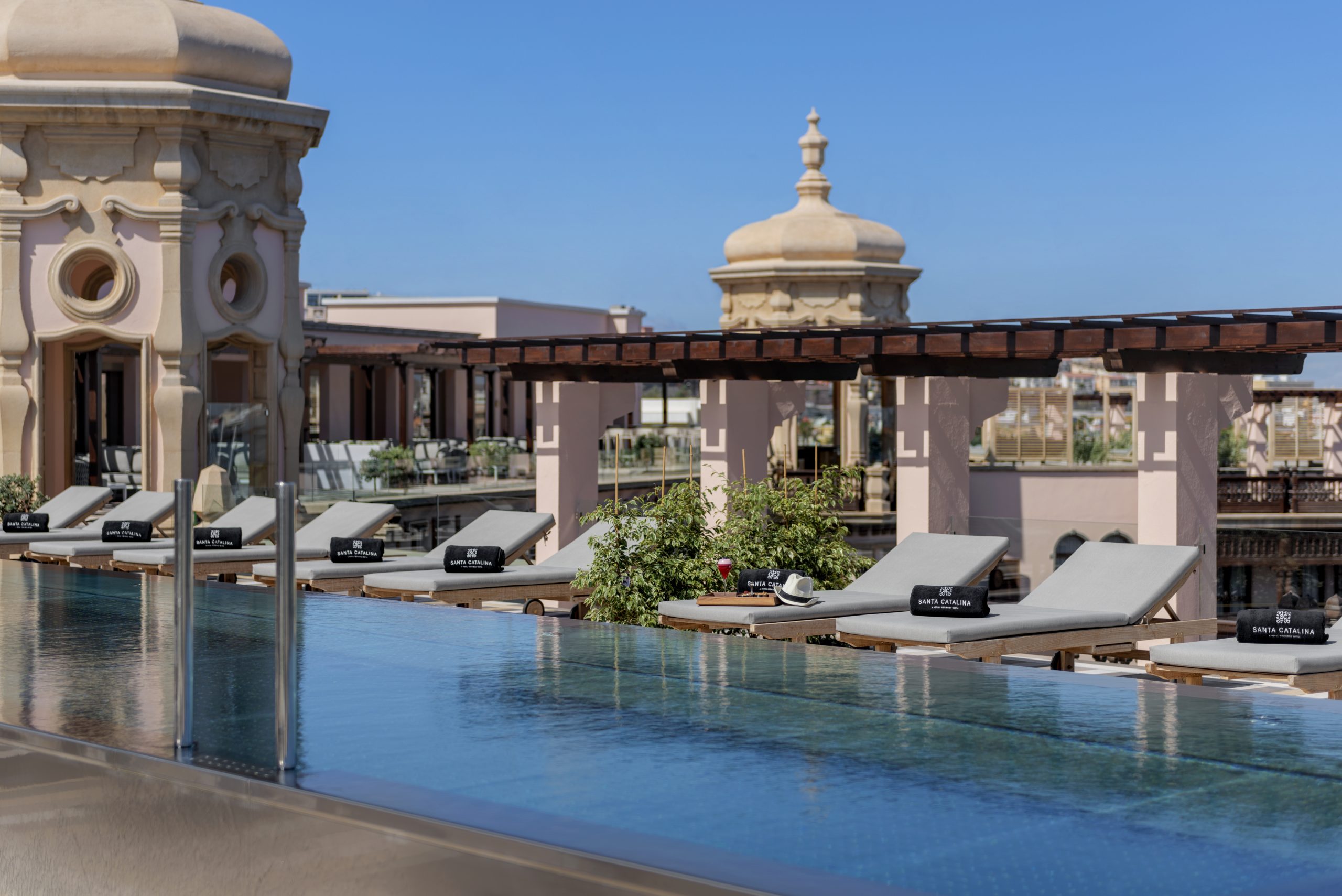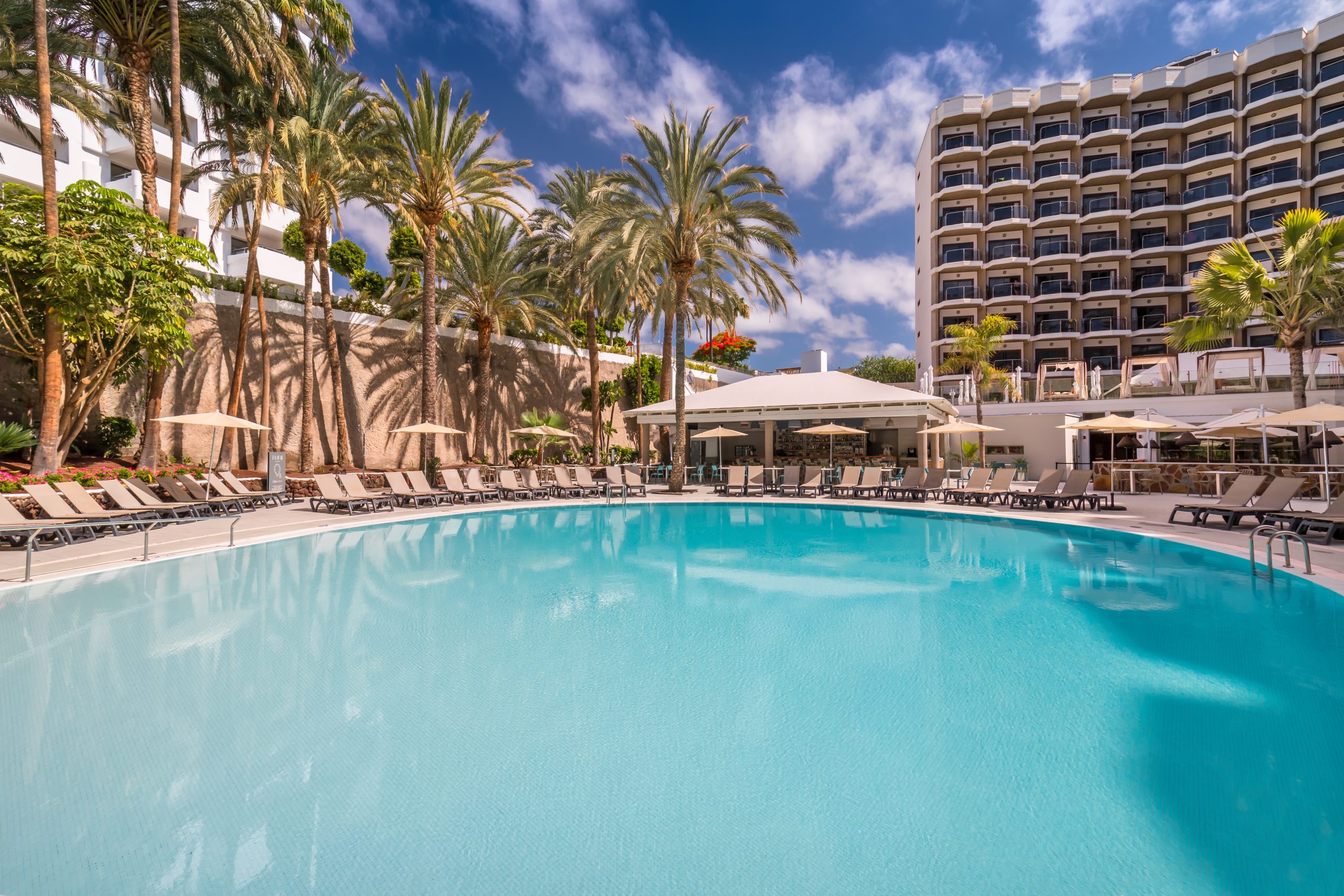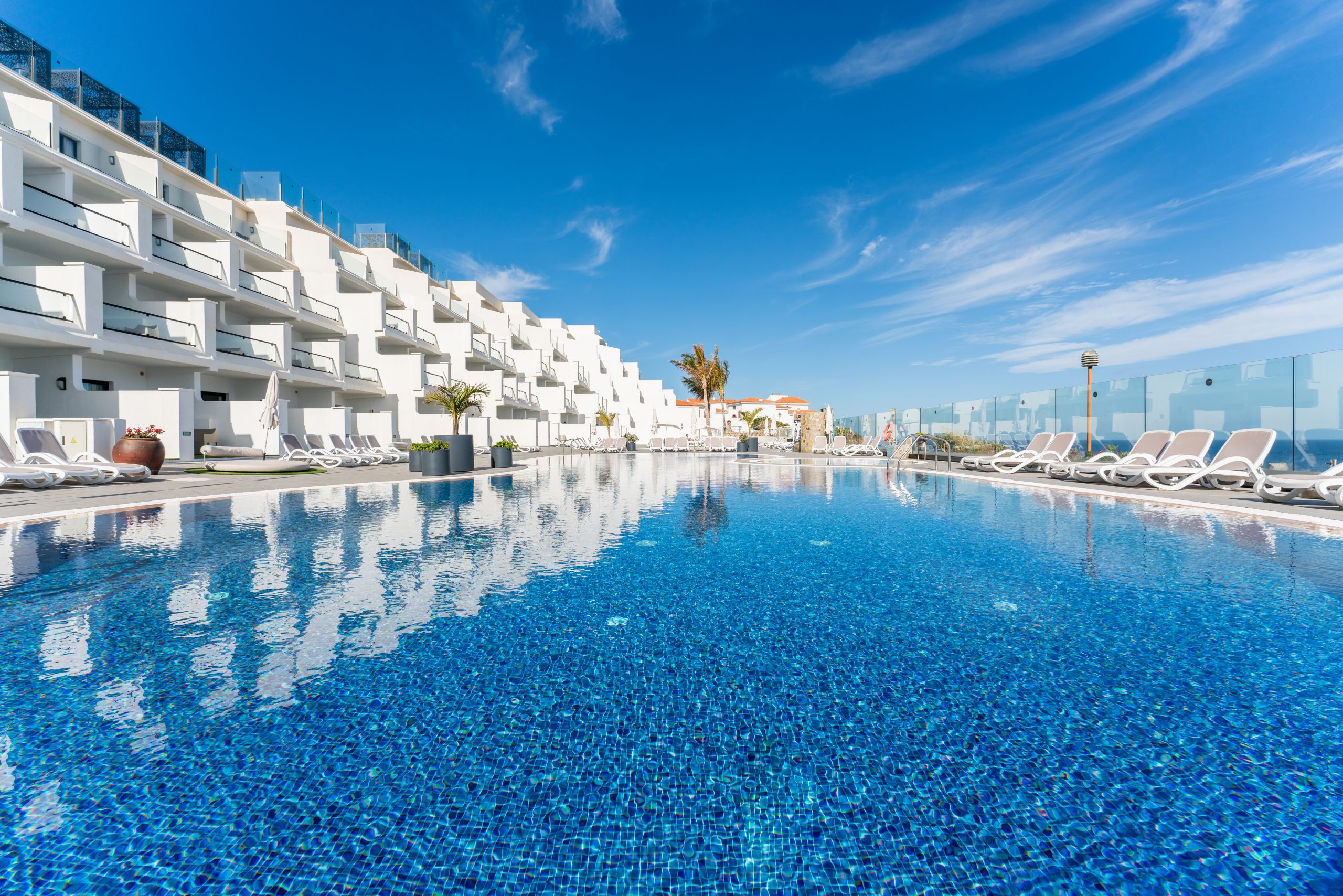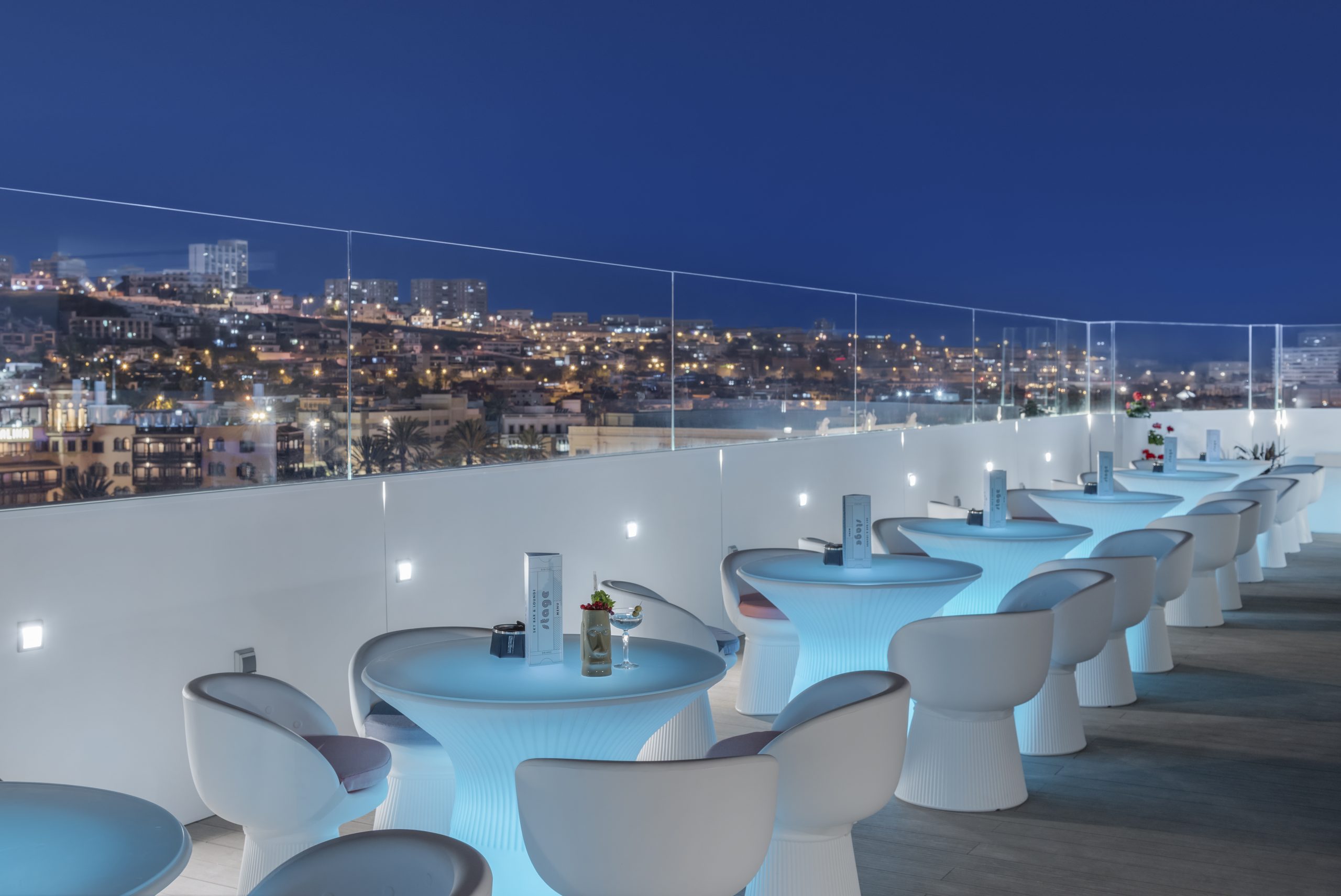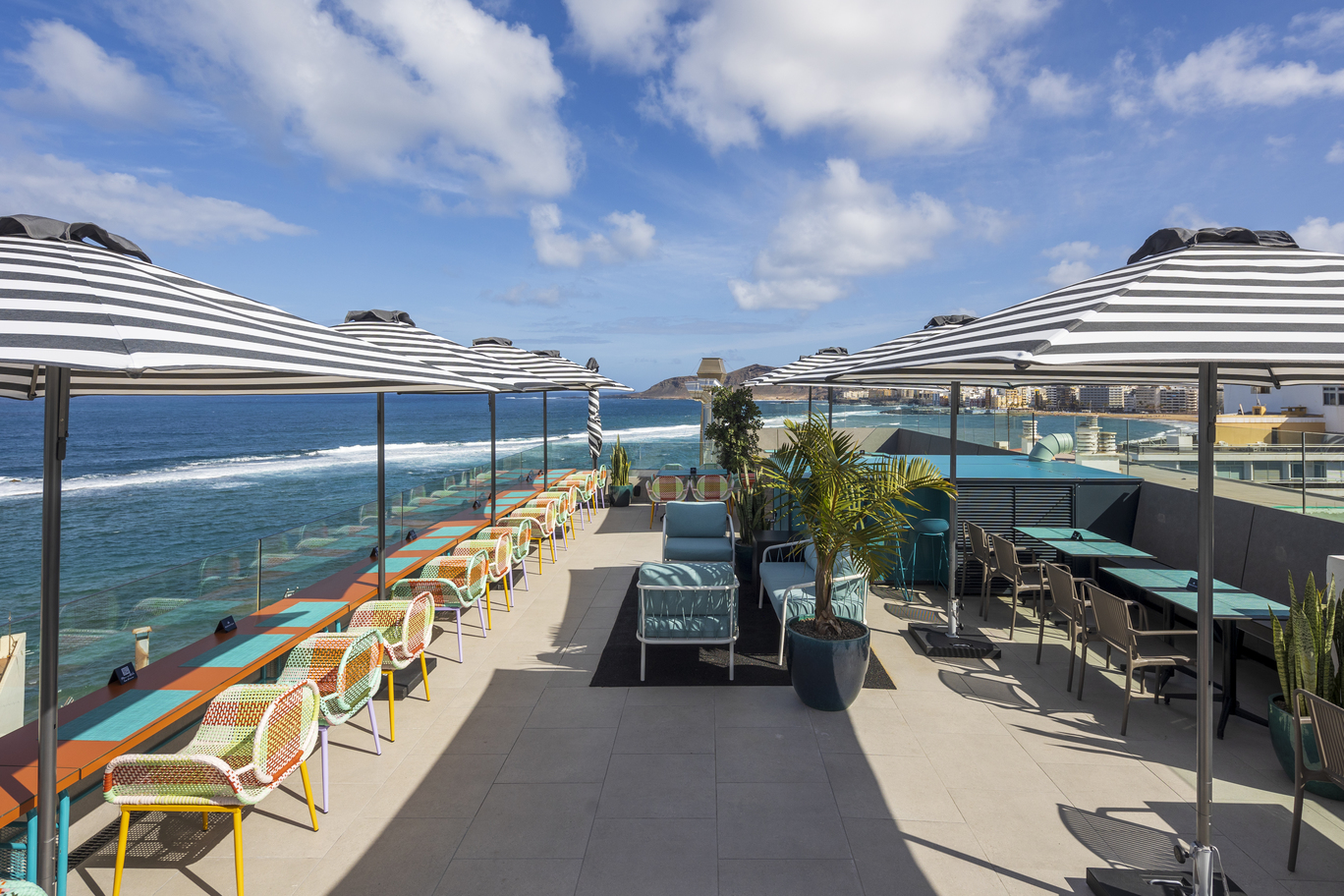Just a short 17-km drive from the capital of Gran Canaria, lies the small municipality of Arucas. Tucked between the municipalities of Moya and Firgas to the west; Teror to the south; and Las Palmas to the east, it is divided into 14 different districts and is home to more than 37,000 inhabitants. The picturesque old quarter of the municipality’s capital dates back to the end of the 15th century, when the Spanish conquistadores completely destroyed the original pre-Hispanic settlement of Arehucas only to rebuild it around the chapel of San Juan. Today, the original church no longer stands but in its place rises the impressive Church of San Juan Bautista. Popularly known as the Arucas Cathedral, the iconic landmark is one of the architectural jewels of the Canary Islands.
Arucas offers a plethora of natural and ethnographic wonders for you to discover. There is Mount Arucas and its sweeping views; and the area’s sublime beaches and excellent surfing spots. A visit to Arucas is incomplete without a visit to the renowned Arehucas Rum Factory, or the surrounding banana plantations or the characteristic volcanic blue stone quarries. Eating in Spain is a delight and it is no different in Arucas – try any of delicious fish- and seafood-based tapas lining the restaurant bars for true ocean freshness.
Arucas Cathedral
On your way to Arucas from Las Palmas, it’s easy to make out the pointed spires of one of the must-see landmarks: the towering Church of San Juan Bautista. The colossal size of the building earned the church the unofficial title of cathedral.
The original chapel was built on the site of an older pagan chapel, in veneration of San Juan Bautista (St. John the Baptist) in 1480. It became a parish church in 1515 and it underwent several restorations throughout its lifespan, each reflecting the architectural traditions of the time. On the cusp of the 20th century, Queen Regent María Cristina declared Arucas a city. And, this is when it was decided to build a city church. The architect Manual Vega March was commissioned and in 1909 construction began. It would take 70 years to complete. Today, the church is considered to be the most emblematic landmarks of the town. It houses an incredible collection of historical and artistic objects, such as Italian sculptures, Flemish- and Andalusian-style paintings, and the works of the great Baroque artist, Cristóbal Hernández de Quintana.
A tour of the city of Arucas
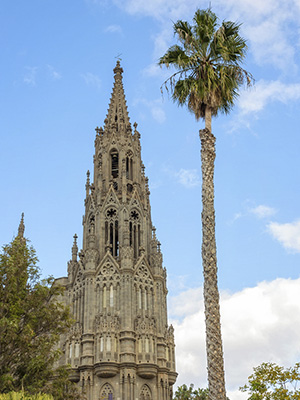
Following a visit to the Tourism Office (León y Castillo, 10), the Cathedral of Arucas is the best place to start your walking tour of the old town. Located in the central square of Plaza de San Juan, the church shares the spotlight with the 20th-century theatre Nuevo Teatro Viejo, a landmark establishment. Over the years, the theatre has hosted circuses, cockfights and a cinema. Today, it is the go-to-place to enjoy theatre.
The city hall and the municipal market of Arcus are just a short 2-minute walk away at the Plaza de la Constitución. These two buildings are excellent examples of 19th-century Canarian colonial architecture. You can also explore the renowned 19th-century Casa de Gourié which now houses a municipal museum. It was built by the same family that founded the successful Arehucas Rum Factory in 1884.
Head to the lavish Casa y Jardín del Marquesado de Arucas, located north of town. Built in 1911, the manor is surrounded by a magnificent, lush, Romanesque-inspired botanical garden with hundreds of different exotic plants and trees, and mirror-like ponds.
Outdoor fun: Mount Arucas, beaches and much more
Once you have completed your tour of the old town, it is time to venture out into the countryside and discover what this beautiful region has to offer.
Mount Arucas is an extinct volcano that was artificially filled in the 20th century in order to build a vantage point and restaurant. You’ll get a bird’s eye view of the city, Tenerife and the soaring Mount Teide.
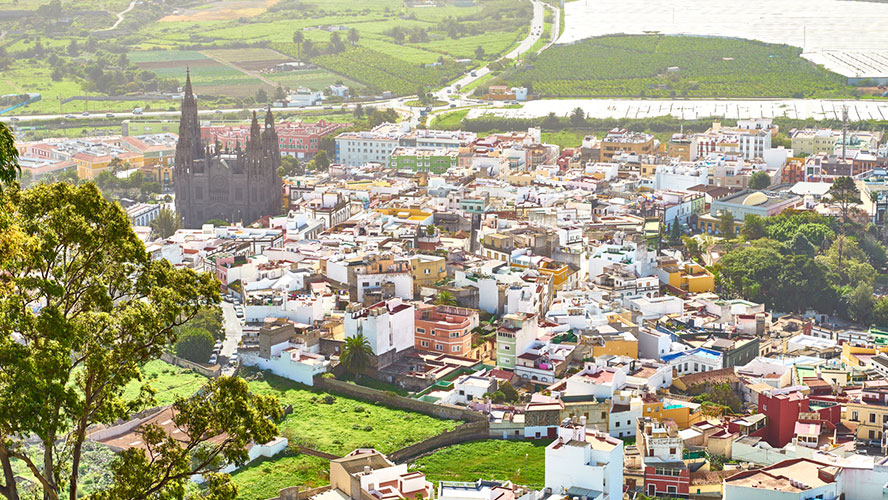
The coast of Arucas is dotted with gorgeous beaches that are easily reachable by CG-2, the coastal motorway. There is the popular 450-m long sandy stretch of San Andrés for a lazy day at the beach, or Los Enanos, a favourite among surfers. The natural pools of Los Charcones are also an ideal destination if you are looking for calm waters for a relaxing dip. They are located just on the outskirts of Puertillo de San Andrés.
If you are in the mood for a more cultural activity, head to the Cueveras de Tenoya. These artificial caves are located in the ravine of Tenoya and include a replica of a pre-Hispanic indigenous settlement. It provides an excellent opportunity to discover the way of life and customs of the native population.
Where to eat in Arucas
Aruquense cuisine knows how to perfectly combine its ocean-fresh fish and seafood with its locally grown greens. You can choose from a wonderful selection of freshly-prepared mussels, red mullet and grouper, and savoury watercress stews made with local staples such as beans, corn, sweet potato and pineapple. There are also other typical products such as the Arehucas honey rum, bananas, biscuits and chocolates. The best place to pick up any of these local delicacies is at the outdoor market held every Saturday morning at the Parque de la Paz in Arucas.
A must-try restaurant is Casa Brito Restaurant Grill (Pasaje Ter, 17), located in the district of Visvique. This unfussy restaurant has not stopped serving expertly chargrilled meat since it opened its doors in 1998. For something more upscale, head to De Enyesque Arucas Restaurant (Juan de Bethencourt, 38). This cosy Canarian-style restaurant offers a unique menu, combining traditional and contemporary cuisine.





























































